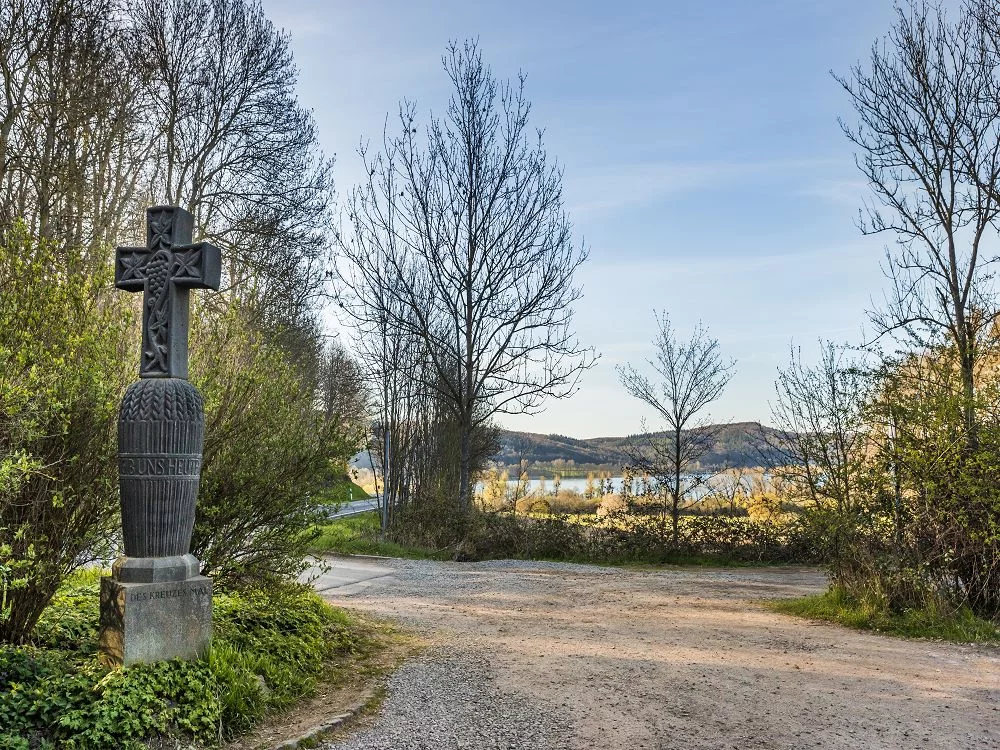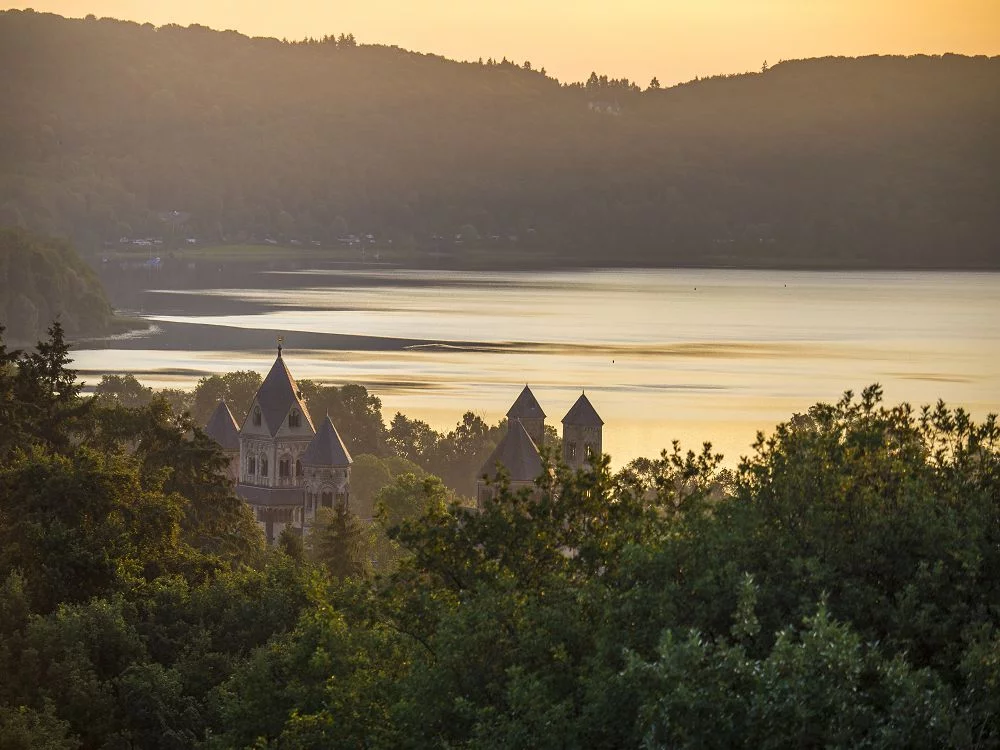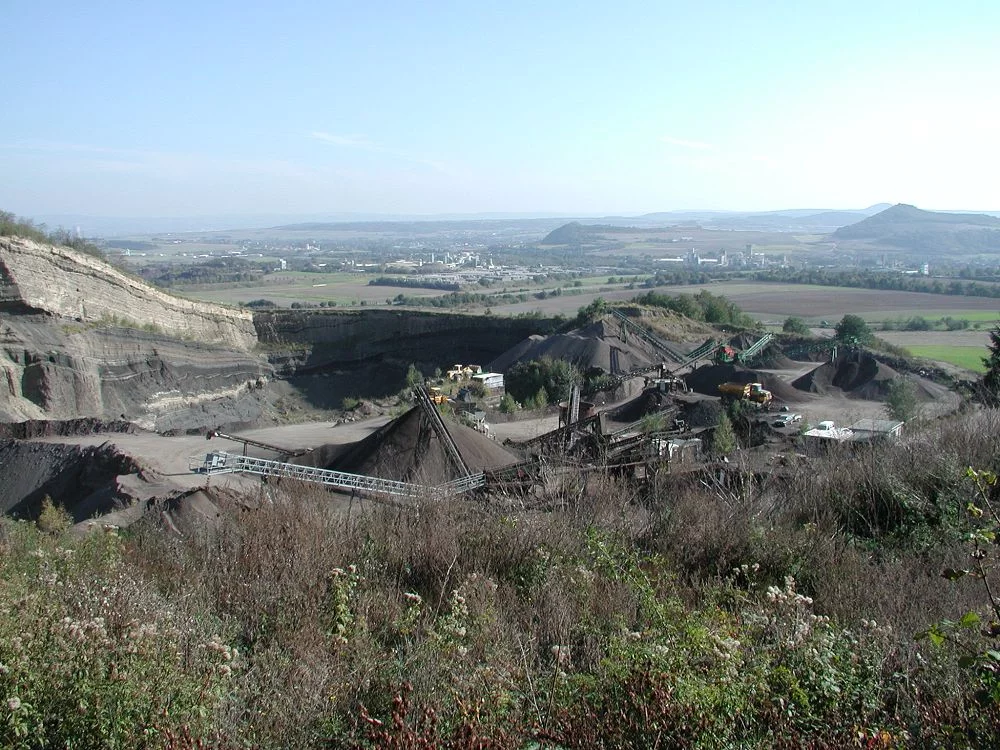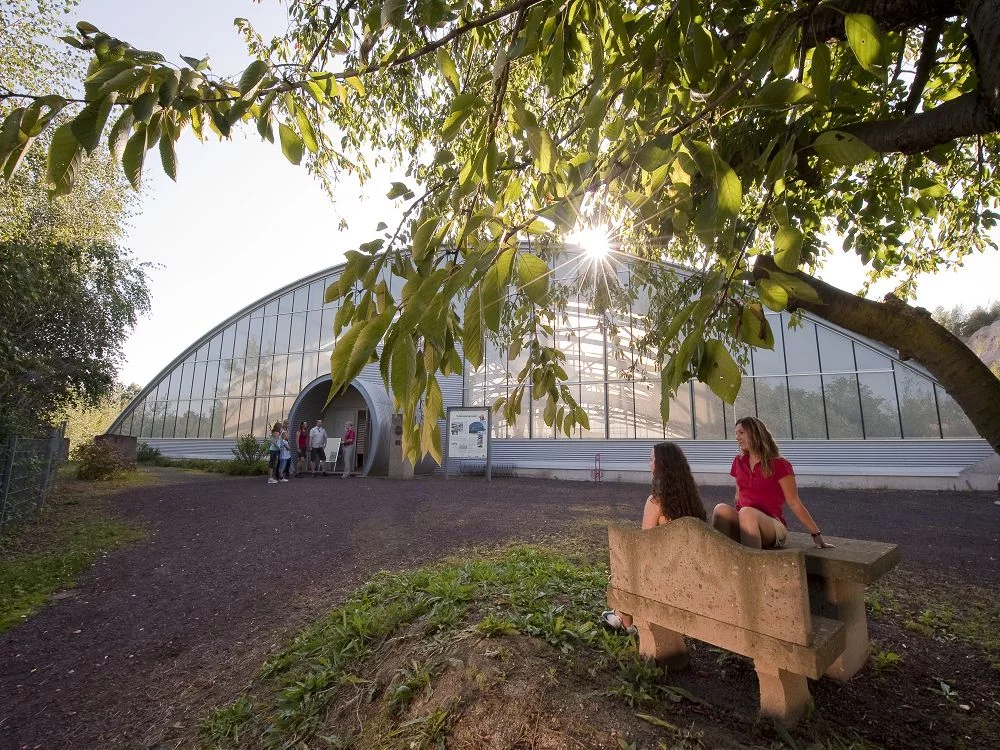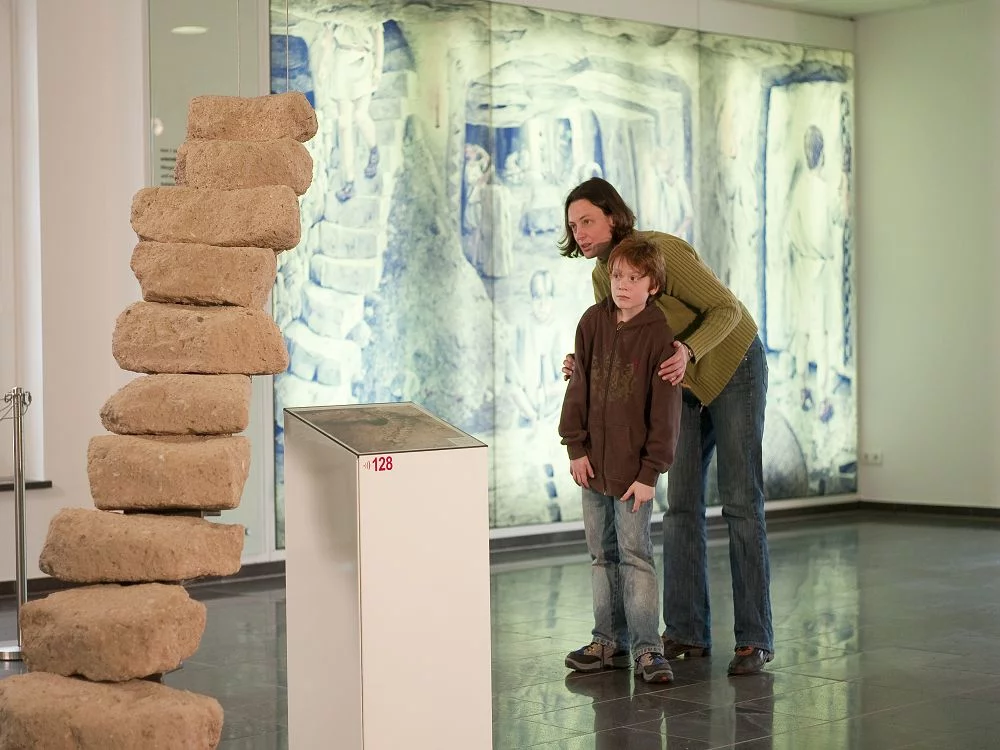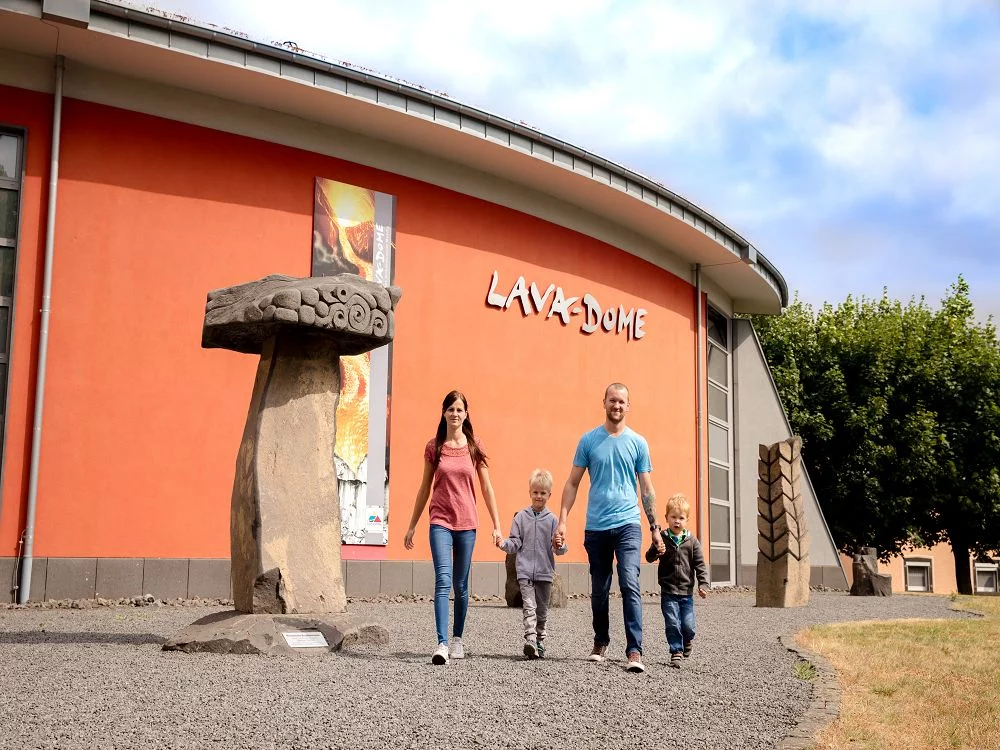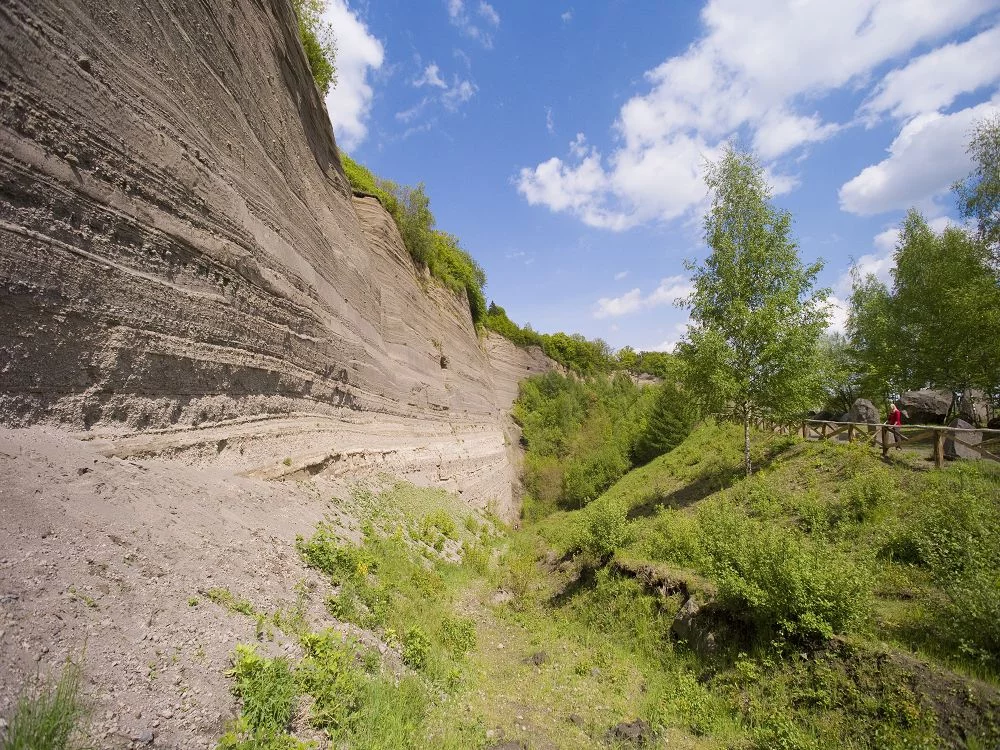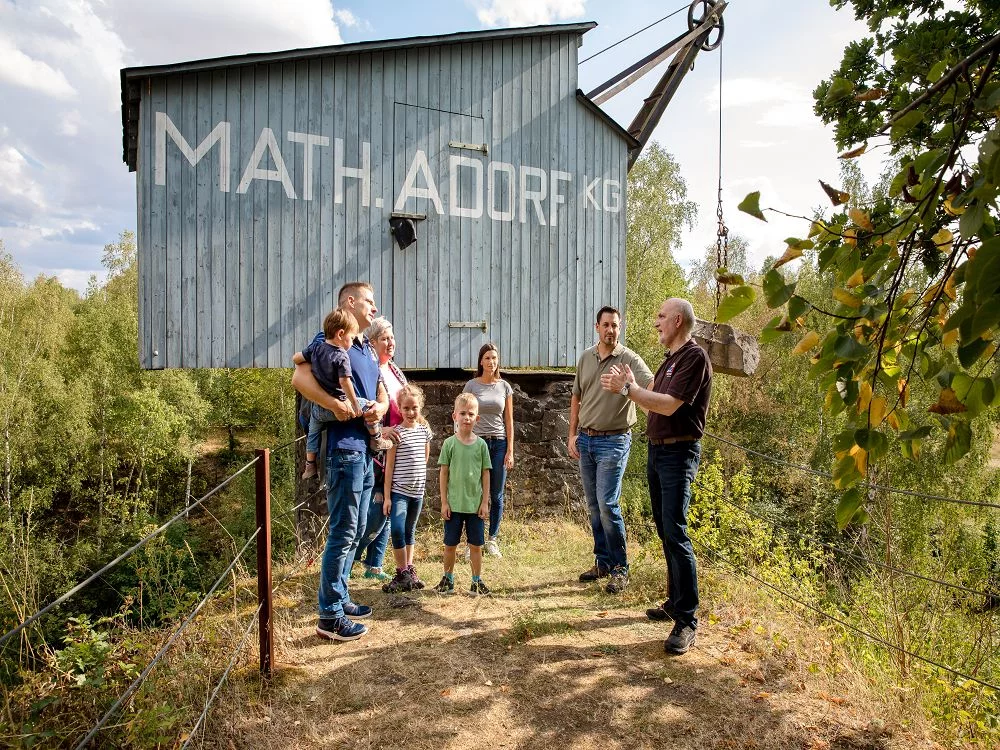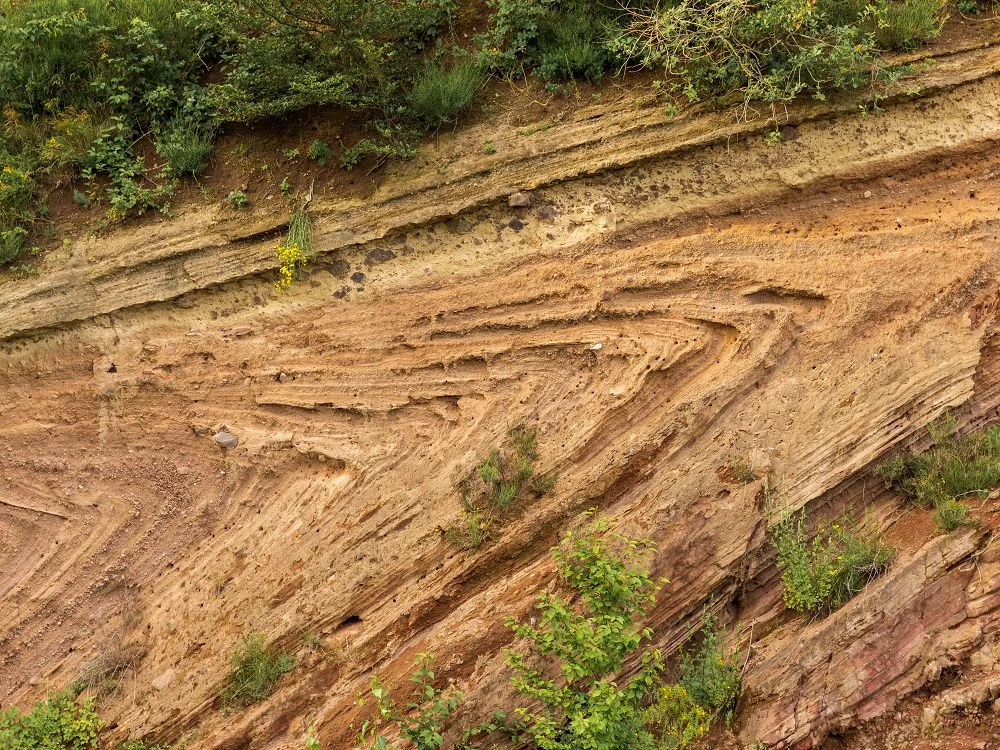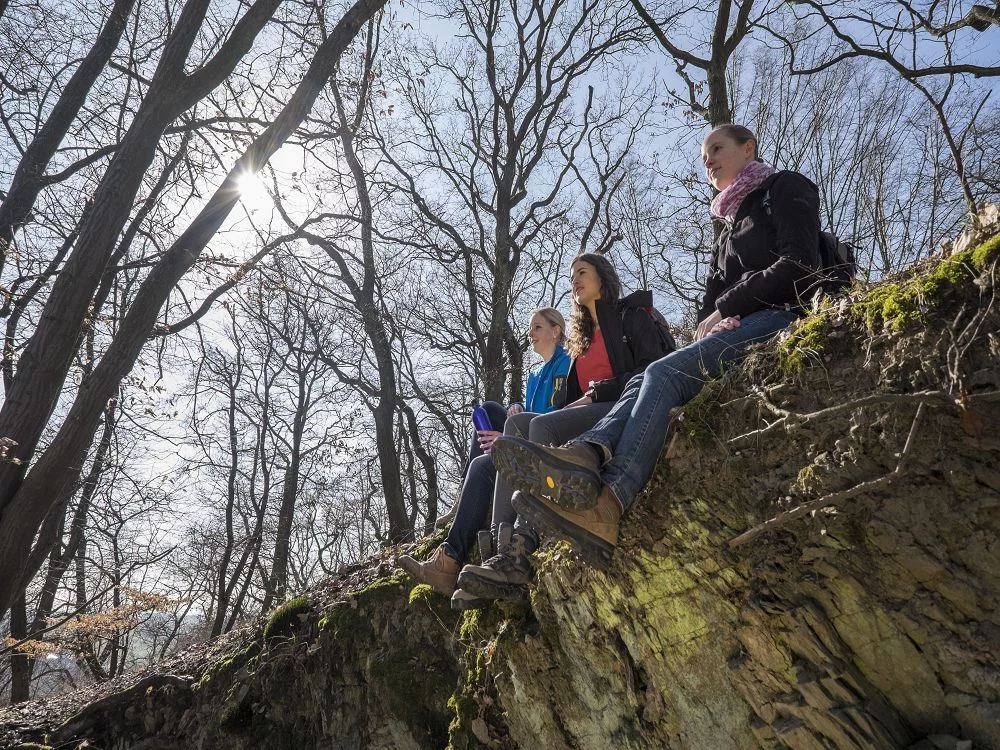There should actually be a mountain here. Or at least a hill. But exactly the opposite can be seen here: a depression! Because something came up, a few tens of thousands of years ago. At first, everything goes according to plan for the young volcano. Scalding hot magma rises from a depth of around 70 kilometers. A vent forms, the pressure of the magma is even and the first shreds of lava begin to rise to the crater rim on the earth's surface. This could have gone on for a long time and bit by bit a uniform volcanic cone would have formed. But suddenly it happens: the lava flow dries up, no more molten rock reaches the earth's surface and the volcano's tap is turned off. What has happened?
The lava simply took a different path just before it reached its destination! In an underground karst cave system, the flow is diverted and only emerges into the open about 300 meters further on a slope, at the Hagelskaule, where it flows into the Kyll valley. This is how the young volcano became famous. This is the only place in the entire Eifel where a magma flow leaves its vent sideways to find a “new bed” in the cave of a karst river.

